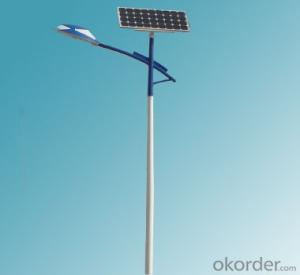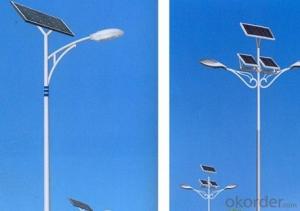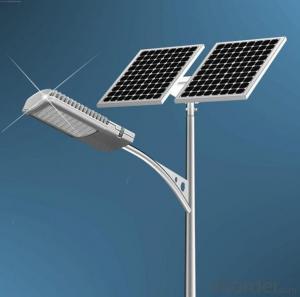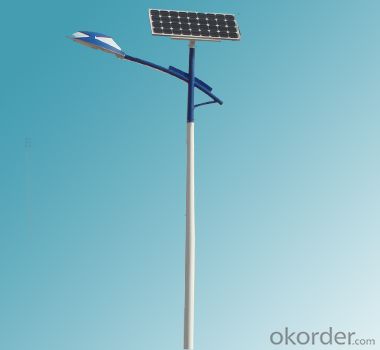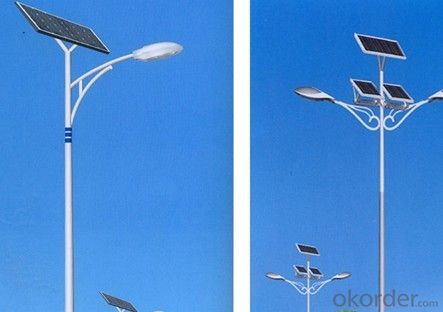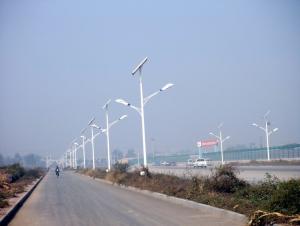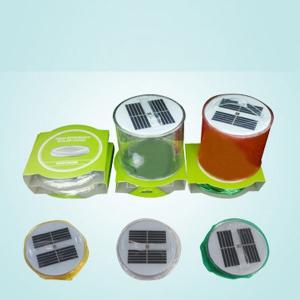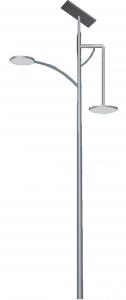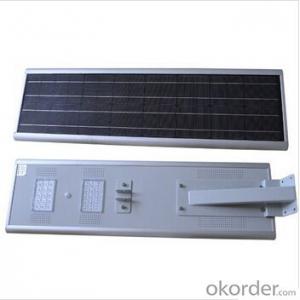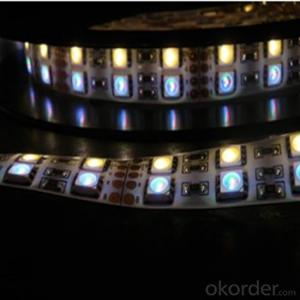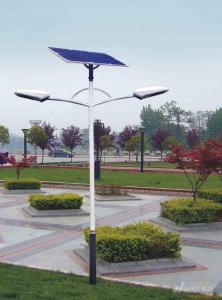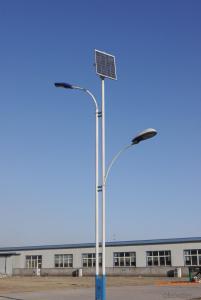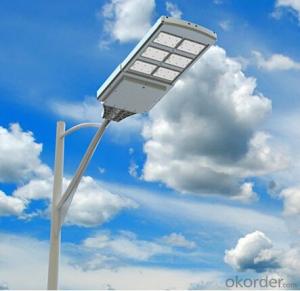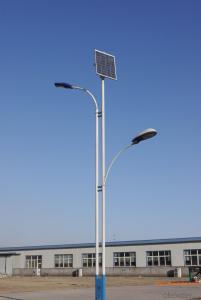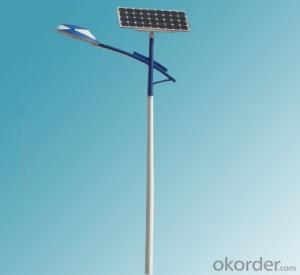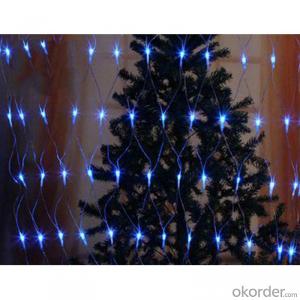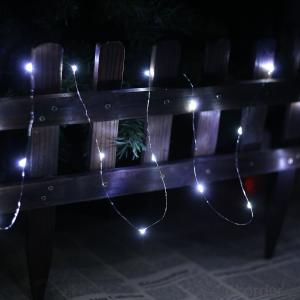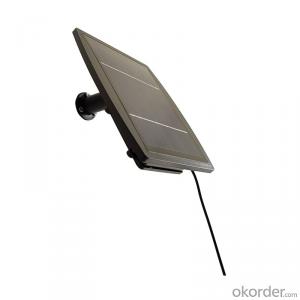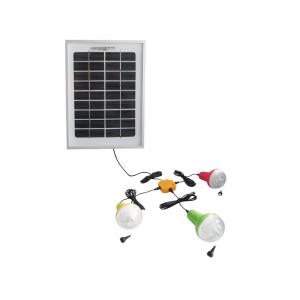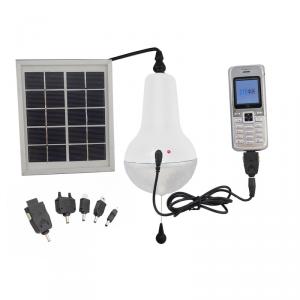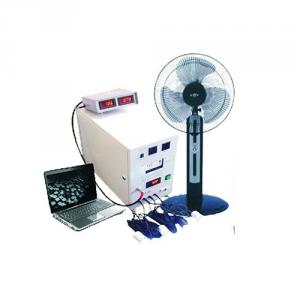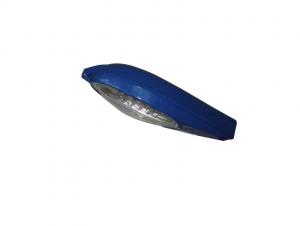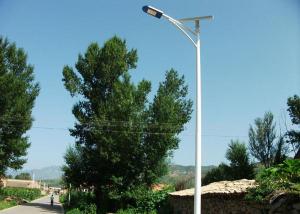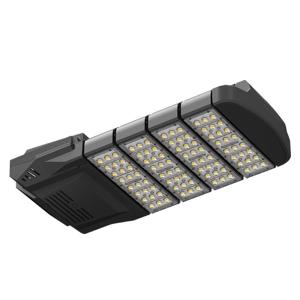Solar Light String - New Energy Solar Product L 67
- Loading Port:
- Ningbo
- Payment Terms:
- TT or LC
- Min Order Qty:
- 1 set
- Supply Capability:
- 5000 set/month
OKorder Service Pledge
OKorder Financial Service
You Might Also Like
1, Product desciption
Inverter circuits designed to produce a variable output voltage range are often used within motor speed controllers.
The DC power for the inverter section can be derived from a normal AC wall outlet or some other source. Control and feedback circuitry is used to adjust the final output of the inverter section which will ultimately determine the speed of the motor operating under its mechanical load.
Motor speed control needs are numerous and include things like: industrial motor driven equipment, electric vehicles, rail transport systems, and power tools. (See related: variable-frequency drive ) Switching states are developed for positive, negative and zero voltages as per the patterns given in the switching Table.
The generated gate pulses are given to each switch in accordance with the developed pattern and thus the output is obtained.
Solar power is energy from the sun. "Solar" is the Latin word for "sun" and
And Powerful source of energy. Without it, there will be no life.
Solar energy is considered as a serious source of energy for many years
of the vast amounts of energy that is made freely available, if harnessed by modern technology.
A magnifying glass can be used to heat up a small amount of water.
The short piece of copper tube is sealed at one end and filled with water.
And magnifying glass is then used to warm up the pipe.
Using more than one magnifying glass will increase the temperature more rapidly.
2, Features of the product
Inverters convert low frequency main AC power to higher frequency for use in induction heating.
To do this, AC power is first rectified to provide DC power. The inverter then changes the DC power to high frequency AC power. Due to the reduction in the number of DC Sources employed, the structure becomes more reliable and the output voltage has higher resolution due to an increase in the number of steps so that the reference sinusoidal voltage can be better achieved.
This configuration has recently become very popular in AC power supply and adjustable speed drive applications. This new inverter can avoid extra clamping diodes or voltage balancing capacitors. There are three kinds of level shifted modulation techniques, namely:
The first thing to figure out is the length of road in need of street lights.
This can be a small entrance road only a couple hundred of feet long to miles of streets through an area. Does the area currently have any type of lighting available.
What is the reason for needing street lights in this area
Is the electrical grid already nearby or would you need to call in the power company to bring in electrical lines.
If the electric needs to be brought to the area, how much is this going to cost? Depending on how far the grid electric is from the location of the needed lighting, this can be quite expensive.
How much lighting is needed on the street? Do the lights need to be dark sky compliant.
Do the street lights need to run from dusk to dawn or for only a specified number of hours at night.
Are the street lights able to dim in the middle of the night and still provide enough lighting.
These questions need to be answered before you can decide on how many lights you will need to complete the project.
3, Detailed Specification
| ||||||||||||||||||||||||||||||||||||||||||||||||
4, Product Image
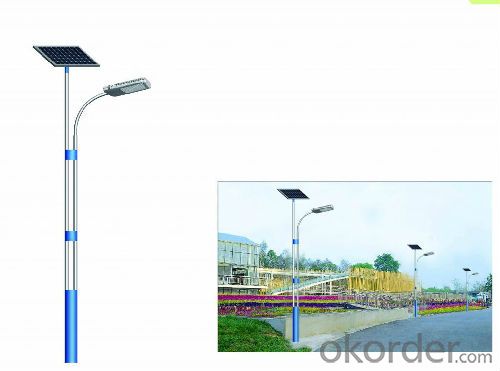
- Q: Do solar lights have adjustable sensitivity levels?
- Yes, some solar lights do have adjustable sensitivity levels. These lights typically have a built-in sensor that detects the level of ambient light and determines when to turn on or off. By adjusting the sensitivity level, users can modify the threshold at which the light will activate, allowing for more customization and energy efficiency.
- Q: Can solar lights be used in areas with extreme temperatures?
- Yes, solar lights can be used in areas with extreme temperatures. Most solar lights are designed to withstand a wide range of temperatures, including both high and low extremes. However, it is important to check the specifications of the specific solar light to ensure it is suitable for the specific temperature range of the area in question.
- Q: How do solar lights prevent over-discharging of batteries?
- Solar lights incorporate a charge controller, a built-in circuitry that prevents the batteries from over-discharging. This charge controller acts as a regulator, overseeing the battery's charging and discharging activities. During daylight hours, the light's solar panel harnesses sunlight and converts it into electricity to charge the battery. The charge controller takes charge of this process, ensuring that the battery does not become overcharged. It accomplishes this by moderating the flow of electricity from the solar panel to the battery. Once the battery has reached its maximum capacity, the charge controller disconnects the charging process to prevent excessive charging and potential harm to the battery. When night falls and the solar panel ceases to generate electricity, the charge controller assumes a vital role in safeguarding the battery against over-discharging. It diligently monitors the battery's power level and shuts off the light when the battery is nearing complete discharge. This proactive measure prevents the battery from draining entirely, which could result in irreversible damage and reduced battery lifespan. By effectively managing the charging and discharging procedures, the charge controller in solar lights ensures optimal utilization and protection of the battery. It helps extend the battery's lifespan, enhances the overall efficiency of the solar light, and provides reliable illumination without the risk of over-discharging the battery.
- Q: The working principle of solar lamps
- Aluminum alloy lamp column is made of aluminum alloy, belong to the metal material, so the correct statement; B. nitrogen chemical nature is not lively, can be used for protection in the bulb, so the correct statement; C. organic synthesis materials must have three characteristics
- Q: Can solar lights be used for public transportation stops or stations?
- Indeed, the utilization of solar lights is viable for public transportation stops or stations. Solar lights present a sustainable and energy-efficient illumination alternative that can be effortlessly incorporated into open-air spaces, including transportation stops and stations. These lights are fueled by the sun, eliminating the need for electricity from the grid, hence rendering them a cost-effective and eco-friendly choice. By adequately illuminating these areas, solar lights ensure the safety and convenience of commuters, particularly during nighttime hours. Furthermore, their low maintenance and prolonged lifespan make them a perfect option for public transportation stops or stations.
- Q: Are there solar lights with remote control operation?
- Yes, there are solar lights available with remote control operation. These lights allow users to conveniently control various functions such as turning the light on/off, adjusting brightness levels, and even setting timers remotely using a handheld remote control.
- Q: Can solar lights be used in areas with high levels of air pollution?
- Yes, solar lights can still be used in areas with high levels of air pollution. However, the efficiency and effectiveness of the solar lights may be reduced due to the decreased amount of sunlight reaching the solar panels. Regular cleaning of the solar panels may also be required to maintain optimal performance in polluted areas.
- Q: Can solar lights be used for flagpoles?
- Yes, solar lights can be used for flagpoles. In fact, they are a popular choice for illuminating flags at night. Solar lights for flagpoles are designed specifically to fit onto flagpoles and provide a bright, steady light source. They are typically easy to install and require no wiring or electrical connections, as they operate solely on solar power. Solar lights for flagpoles come with built-in solar panels that absorb sunlight during the day and convert it into energy to power the lights at night. This makes them an energy-efficient and environmentally-friendly option for flagpole lighting. Additionally, solar lights for flagpoles often have features like automatic on/off sensors and adjustable brightness settings, allowing you to customize their operation according to your preferences.
- Q: Can solar lights be used in areas with heavy snowfall?
- Solar lights can be used in areas with heavy snowfall, but their effectiveness may be reduced. The snow can cover the solar panels, blocking sunlight and preventing the lights from charging fully. However, there are ways to mitigate this issue. For instance, placing the solar lights in areas where snow accumulation is less likely, such as on rooftops or high poles, can help ensure they receive ample sunlight. Additionally, regular maintenance, like brushing off snow from the panels, can also help keep the lights operational during the winter months. Alternatively, some solar lights come with detachable solar panels that can be placed in areas with maximum sunlight while the lights themselves are installed in more snow-prone locations. Overall, while heavy snowfall can pose challenges, solar lights can still be used effectively with some precautions and maintenance.
- Q: How do solar lights handle electromagnetic interference from industrial machinery?
- The design of solar lights includes shielding and filtering mechanisms to handle electromagnetic interference (EMI) caused by industrial machinery. EMI refers to the electromagnetic energy generated by electronic devices or machinery, which can disrupt or interfere with the functioning of other electronic equipment. Manufacturers employ various techniques to minimize the impact of EMI on solar lights. Firstly, they incorporate conductive metals or alloys as shielding materials around the internal components of the solar light. This shielding acts as a barrier, preventing the entry or exit of EMI. Additionally, the design of the solar light may include isolated compartments or enclosures to further reduce the potential for EMI interference. Furthermore, solar lights often have built-in filters to suppress or eliminate unwanted EMI signals. These filters, strategically placed within the electrical circuitry, can be passive components like capacitors, inductors, or resistors. They absorb or redirect EMI signals, preventing them from affecting the performance of the solar light. Moreover, solar lights undergo rigorous testing and comply with industry standards to ensure their ability to withstand and operate in high EMI environments. These tests evaluate the lights' resistance to electromagnetic radiation and their proper functioning in the presence of EMI sources. In conclusion, solar lights are equipped with shielding materials, filters, and adhere to industry standards to handle electromagnetic interference from industrial machinery. These measures ensure that the lights can provide consistent illumination without disruption, even in environments with high levels of EMI.
Send your message to us
Solar Light String - New Energy Solar Product L 67
- Loading Port:
- Ningbo
- Payment Terms:
- TT or LC
- Min Order Qty:
- 1 set
- Supply Capability:
- 5000 set/month
OKorder Service Pledge
OKorder Financial Service
Similar products
Hot products
Hot Searches
Related keywords
